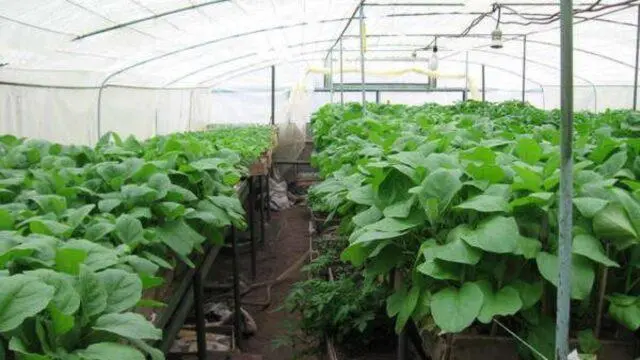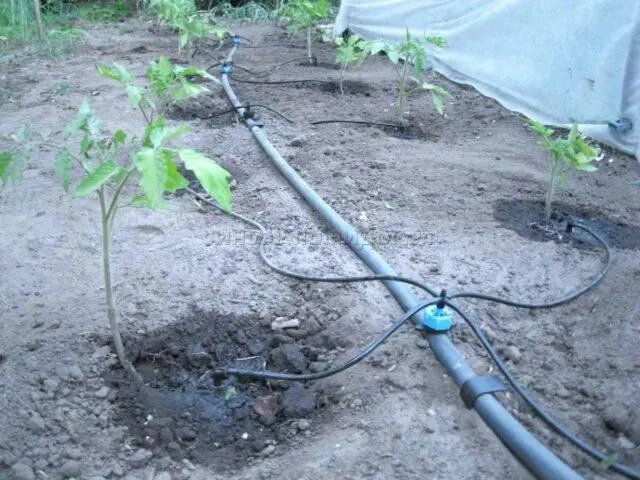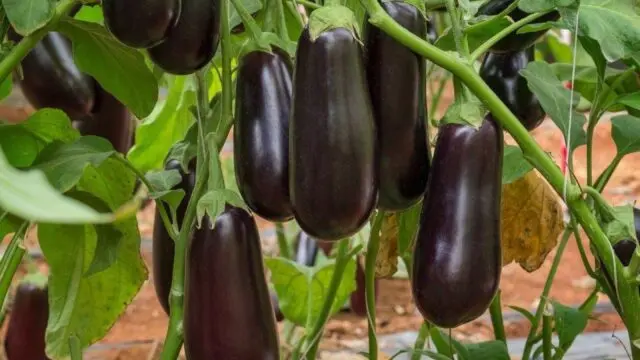Contents
Watering eggplant in a greenhouse is necessary at least once every five days. Moreover, if young plants are given up to 1 liter, then when watering adult bushes, up to 2 liters of liquid are consumed. Pre-defend it in the sun or indoors. Water can be given from a watering can, with a hose or drip irrigation.
Water requirements
Eggplants are demanding crops, so you can’t just water a greenhouse with a hose. Tap water can be hard and often too cold. If there is no other source, you can pour water from a tap or a column, but then it must first be defended for at least 12 hours.
Usually summer residents fill the container and leave it on the street. During the day, it warms up well, and in the evening you can start watering the eggplants in the greenhouse. If it’s too cold outside, you can leave a few buckets indoors. During this time, the water will warm up, and besides, excess chlorine will come out of it.
It is also recommended to put a barrel or other large container on the street so that it stands on the street and accumulates rainwater. It is this liquid that is the best for watering eggplants in a greenhouse. Rain moisture is soft, does not contain harmful impurities and has an acceptable temperature.
The frequency of watering eggplant in the greenhouse
Solanaceae require regular watering, while the water should flow evenly. For example, you can’t not water the plants all week in hot weather, allowing the soil to dry out, and then fill the garden bed with several buckets of water on the weekend.
Water is given gradually, maintaining soil moisture at a constant level. Since the cultivation takes place in a greenhouse, you can not follow the weather forecast. This is quite convenient, since when growing outdoors in a rainy summer, it is not always easy to calculate the amount of water for irrigation.
The standard frequency in the greenhouse is once every 5-7 days. Water is given at the rate of 10 liters per 1 m2 landings. At the same time, the regularity and rate of watering must be regulated. Most water is required for adult specimens – 2 liters per bush, and least of all – for seedlings of seedlings (from 500 ml to 1 liter). If the weather is hot, the soil will dry out faster even in a greenhouse. During the dry season, water is given up to 2-3 times a week.
The surface layer should remain slightly damp. If it is too waterlogged, the roots of the plants will begin to rot. On the other hand, drying out and, moreover, cracking of the earth should not be allowed.

Water the plants in the greenhouse at least once every five days
Watering methods
There are several convenient ways to water eggplants in a greenhouse. If there is no special equipment, water is given using a conventional watering can with a nozzle. But it is best to equip a drip irrigation system. It is not so expensive, but it saves a lot of effort and also provides a good harvest of eggplant and other crops.
With a watering can
Watering with a watering can remains a popular method, since the greenhouse area is usually small. Approximately two buckets of water are spent on each bed at the rate of no more than 10 liters per 1 square meter. For irrigation, watering cans of a standard volume of 3-5 liters are used so that they can be easily transferred to any place.
When watering eggplants in a greenhouse, they try to get exactly under the root, into a small hole in the root zone, made in advance. It is recommended to work in the evening. In this case, it is important not to get on the leaves, shoots and other ground parts of the plant in order to prevent sunburn. If there is no time, it is permissible to water in the early morning. If necessary, planting is shaded with a white non-woven fabric.
Hose watering
Eggplants and other plants in the greenhouse can also be watered with a hose. This is a simple method, but its disadvantage is that the water will be cold. Therefore, a few practical points should be taken into account:
- Do not use wells, artesian water from a well. It is very cold, and eggplants will get more harm than good from such watering.
- Water only under a little pressure, otherwise leaves, flowers, pollen may crumble.
- Put a special diffuser on the hose. It allows you to adjust the pressure, which ensures the safety of plants.
- Direct the jet only under the root, not falling on other parts. Simultaneously with the beds, you can water and row spacing in the greenhouse. This is of particular importance in hot weather.
Drip irrigation
The most correct system is drip irrigation of eggplants. You can make it both in the greenhouse and in the open field. To do this, they purchase a special set of pipes and connections, assemble according to the instructions and connect to a water supply source.
The pipes have holes from which water flows. They are located at intervals of 50 cm and supply liquid within a radius of 25 cm, which is quite enough to cover all plants. Thanks to drip irrigation, water for eggplants in the greenhouse flows evenly. In fact, this is an imitation of rain, which is best for all plants.

Drip irrigation system can be assembled independently
How to properly water eggplant in a polycarbonate greenhouse
Watering eggplant in a greenhouse is quite simple, but for this it is important to observe the rate and frequency of watering. These indicators depend on the life cycle – newly transplanted seedlings do not require as much moisture as adult bushes. The main rules are described below.
Watering eggplants in the greenhouse after planting
After planting the seedlings in the ground, it is worth watering the eggplants in the greenhouse quite often – once every five days, and if possible, then once every 3-4 days. Water is given at the rate of 1 liter per 1 plant. At the same time, planting should not be too dense – an interval of at least 30 cm is left between the eggplants. Since 5 plants are placed per square meter, water is given in the amount of 5 liters (half a bucket) per 1 m2. Therefore, for one standard bed, 1,5-2 buckets are enough.
If possible, young bushes are irrigated using a drip irrigation system. The liquid should be given twice a week, regularly airing the greenhouse. If the air humidity is too high, this will contribute to the spread of fungal infections.
Watering eggplants in a greenhouse during flowering
During flowering, watering continues to be given once every 5 days, i.e. about twice a week. However, volumes must be increased as the bushes grow. For each adult plant, 1,5-2 liters are consumed. If five eggplants grow in the garden, then 8-10 liters are spent per square meter, i.e. almost a bucket of water.
During the flowering period, it is very important to ensure that the water remains warm. Otherwise, the flowers will fall off, and the ovaries will stop forming. This will inevitably affect the yield.
How to water eggplants in a greenhouse during fruiting
At the fruiting stage, watering eggplants in the greenhouse is given as often as possible – at least twice a week. If the weather is hot and the soil dries out quickly, the procedure is repeated in the “day after day” mode, i.e. 3-4 times a week. At the same time, the volumes are kept at the same level, i.e. up to 2 l per plant and up to 10 l per 1 m2.
How to water eggplant in a greenhouse in the heat
In hot weather, plants in the greenhouse are watered twice a week. If eggplants enter the fruiting phase, you can water them as often as possible, i.e. three times per week. In this case, the consumption rate is 10 liters per 1 m2.

In the heat, water is given after 3-4 days
The condition of the soil should be periodically monitored. So that it does not dry out too quickly, it is necessary to mulch the plantings with sawdust, hay, peat, needles or other materials.
Common mistakes
Watering plants in a greenhouse is a fairly simple procedure. There is no need to follow the weather forecast, you can accurately calculate the required volume of water in advance. But in practice, summer residents can make certain mistakes. The most common are:
- Some gardeners do not have time to stock up on water and use cold liquid. In fact, it is better to wait until the evening or until the next day, let the water warm up, and then water it.
- Especially a lot of liquid should be given after transplanting seedlings into open ground. At the same time, it is important to observe the watering rate so as not to overmoisten the soil.
- When watering from a hose, the jet should not be too strong.
- The greenhouse should be regularly ventilated. If the temperature outside at night does not drop below +15 degrees, the doors are left open around the clock.
- After watering, it is recommended to loosen the soil. If necessary, weeding is done.
Conclusion
Watering eggplant in a greenhouse is easy if you follow the recommendations described. The consumption rate is from 1 to 2 liters per plant. Moreover, up to one bucket of water is spent per square meter. It is best to equip a drip irrigation system – this will save both time and effort.









